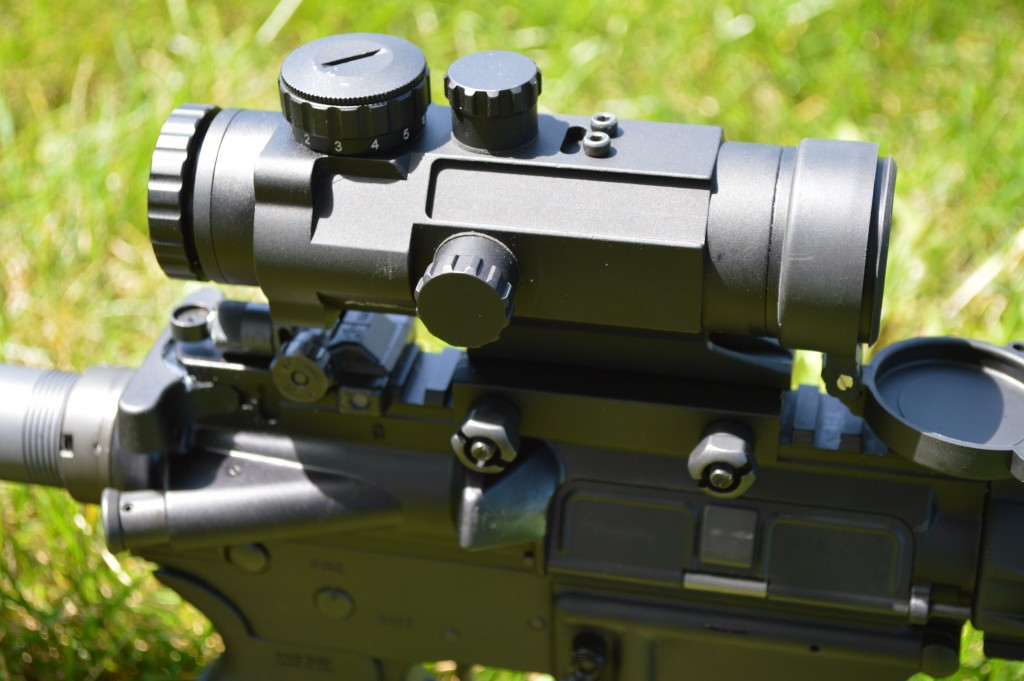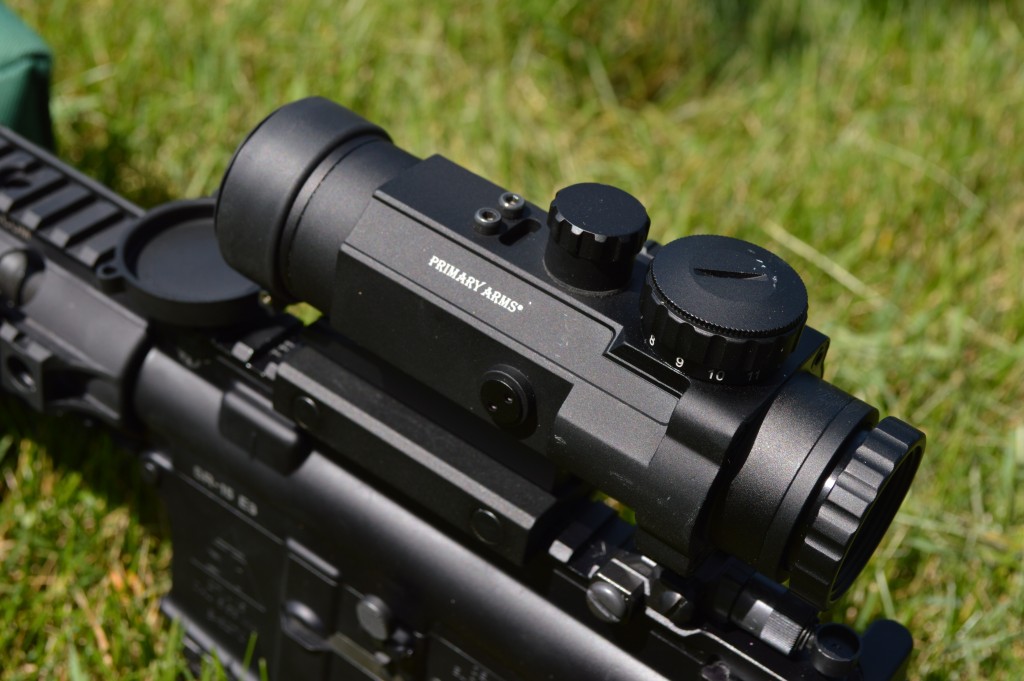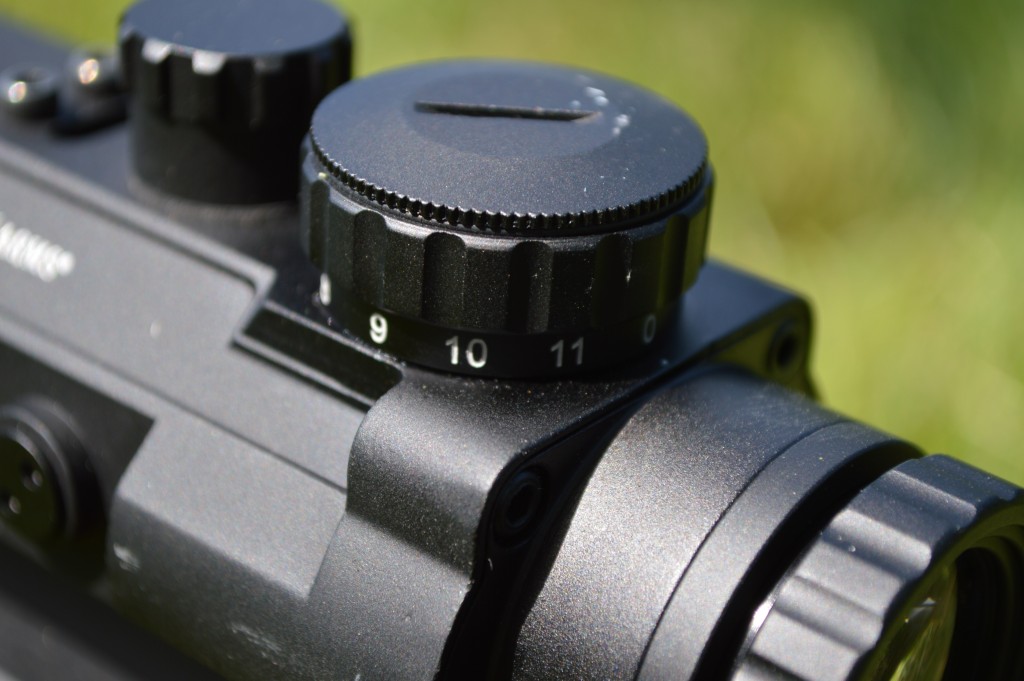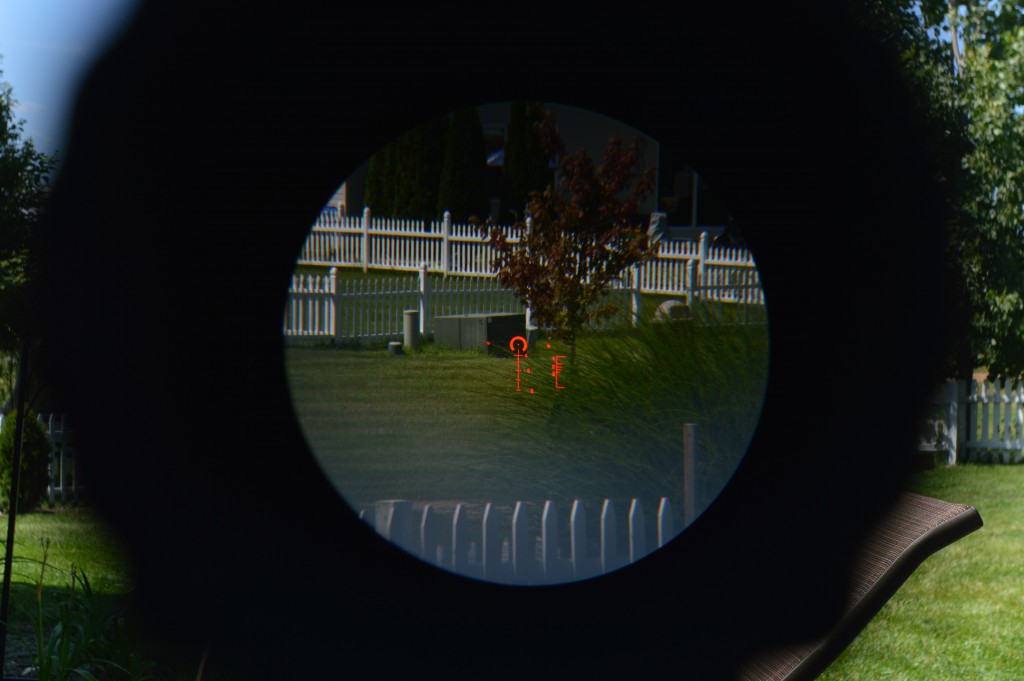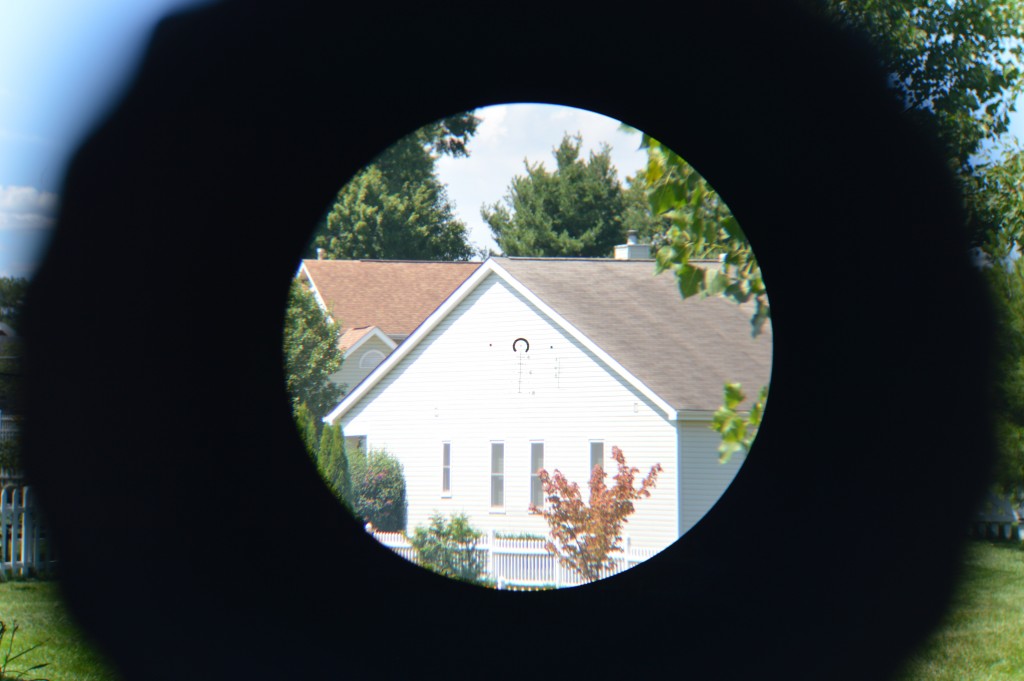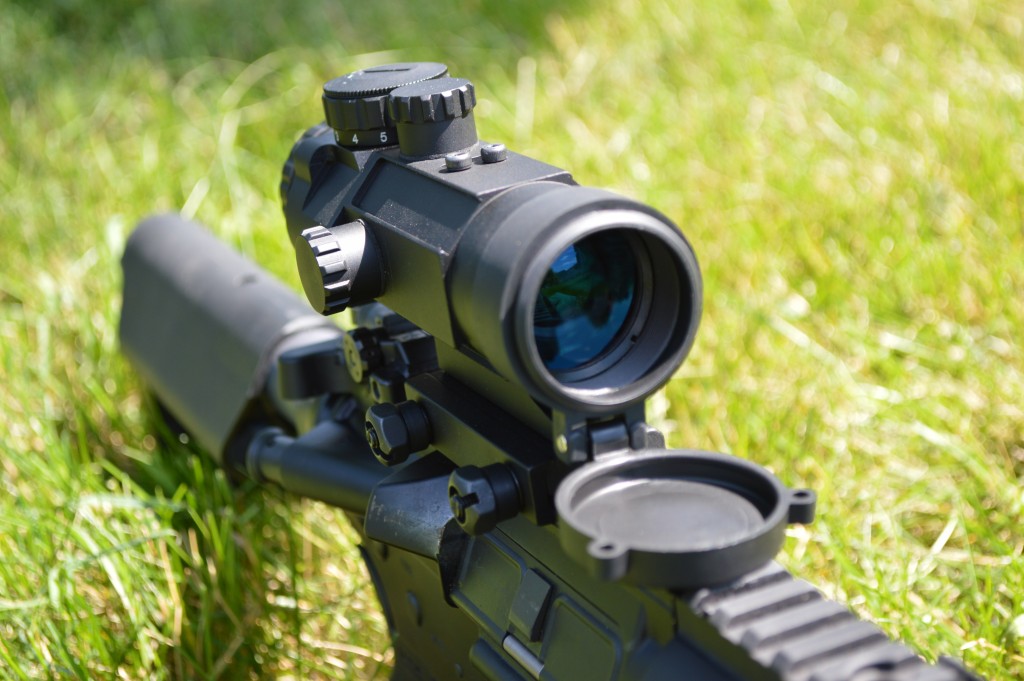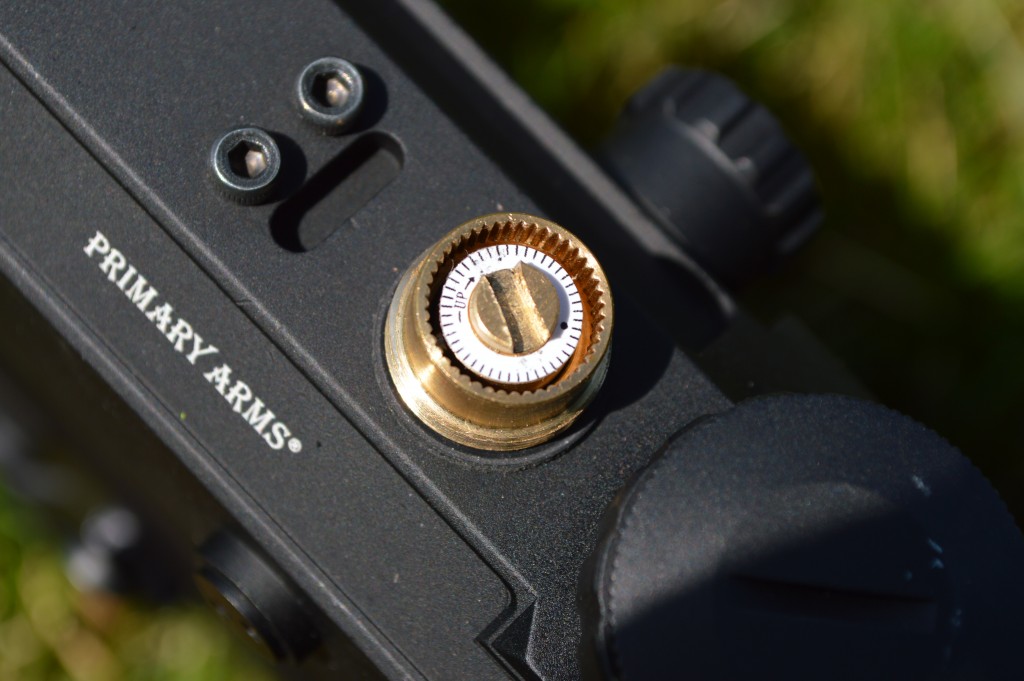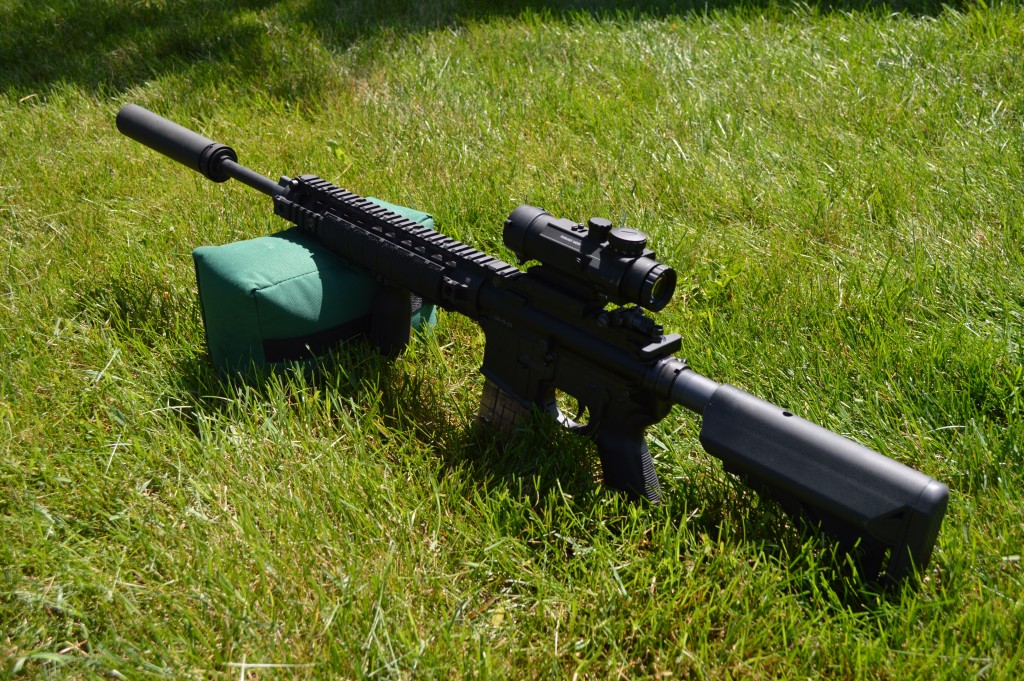Primary Arms 4x ACSS Compact Prism Scope (PAC4X) Review
This past March, I joined a new shooting club with a substantially longer rifle range than my old stomping grounds. After a few trips out, I realized that I needed a magnified optic for my SR-15 build as the red dot simply could not cut it out to 400 yards with my astigmatism. As was the case when I picked up the red dot, I wanted to stick to a reasonably tight budget with this upgrade, and once again, Primary Arms seemed like an ideal place to shop. Since weight is a key consideration for me when accessorizing this SR-15, the (now discontinued) Primary Arms 4x Compact Prism Scope (PAC4X) stood out as my best option. How has it fared? Let’s take a look.
Size
When I decided to move from my Primary Arms red dot to a magnified optic, I fully expected to take on additional weight. The addition of magnified lenses and a prism inevitably make even the lightest scopes much heavier than comparably-sized red dots. In this case, I transitioned from the 10 oz Primary Arms red dot to the 16 oz PAC4X. A six-ounce increase is not huge but sitting above the rifle, that weight is certainly noticeable. As much as I wish that lighter options existed, compact, fixed magnification optics like the PAC4X and ACOGs are far lighter than similarly priced traditional scopes.
The overall footprint of the PAC4X is not much larger than the red dot it replaced. At 5.5” in length, the PAC4X is just half an inch longer than the red dot, and both sit at the same height over bore if the dot sight is used with an absolute co-witness mount. Shooters who have used the TA01 or TA31 series ACOGs will find that the PAC4X is almost identical in size to these pricier options.
ACSS Reticle
One of the most popular scope reticles on the market over the last several years has been Trijicon’s horseshoe system found in many of their ACOG sights. Touted as the perfect balance between close quarters usability and long-range precision, the horseshoe reticle features a large illuminated “horseshoe” that surrounds a much smaller center dot. At first glance, the aiming picture looks quite a bit like an EOTECH, but the stadia for ranging found below the illuminated portion offer greater precision at longer ranges than the holographic sight.
Primary Arms’ ACSS (Advanced Combined Sighting System) is a significant improvement over Trijicon’s design. Much like the ACOG, the PAC4X has a tiny center dot surrounded by a large horseshoe. On the PAC4X, these two elements are illuminated by a red, CR2032 battery operated LED that features 11 brightness settings (yep, this one goes to 11). Another ACOG-like feature is the non-illuminated stadia lines directly below the center dot. These hash marks begin with a top point that also constitutes a 300-yard aiming point, and there are additional ticks for every 100 yards of range, all the way to 800. Like Trijicon’s design, the width of these stadia estimates an average human’s shoulder width at the denoted range.
When I said the ACSS is an improvement over the Trijicon horseshoe, I meant it. There are two additional features that the ACSS has over the ACOG reticle that I feel set it apart. The first is the inclusion of windage dots on each side of the lower stadia. These tiny dots are intended to help shooters account for a 5 MPH crosswind at each measured distance. They do not clutter the sight picture and are a great way for shooters to quickly estimate the effects of a light-to-moderate breeze. The second improvement is the rangefinder on the right side of the reticle that helps shooters calculate target distance based on average human height. In a defensive situation, it is unlikely that an attacker would be standing square to the user, rendering the center stadia useless. The height-based rangefinder addresses this shortcoming by allowing users to estimate distance-to-target according to height. The varying lengths of the horizontal marks on this rangefinder perform the same shoulder width ranging function as the center crosshairs.
The illumination offered by the PAC4X works very well. I have found that any setting below 8 washes out considerably in bright daylight, but in low light situations the lower levels really shine. My only real complaint is that there is a substantial difference between levels 10 and 11 and at times, I have found myself looking for something in-between the two.
Marshall Lerner from Primary Arms has said that he feels the ACSS reticle is a world-class aiming system. I fully agree with him on the matter; it may even be the best BDC (bullet drop compensating) reticle on the market at this point. I love the Trijicon crosshairs and horseshoe systems, but the ACSS is faster to use than the former and offers additional features over the latter. While some rangefinding reticles can feel quite cluttered, the ACSS offers a multitude of features in the cleanest way possible.
Glass Quality
The glass on the PAC4X is one of the highlights of the package. In terms of light transmission and optical clarity, I like to think of the Primary Arms scope as 90% of an ACOG for 30% of the price. As the owner of a TA11-J, I can confidently say that the sight picture on the PAC4X is not noticeably dimmer than the Trijicon. The PAC4X glass is clear edge to edge and has no discernable “fish-eye”.
Unlike many prism scopes, the PAC4X features adjustable focus that can be tuned by turning the rear eyepiece. This is a welcome addition for those of us with eye issues and it does work well. After a few minutes of tinkering, I was able to find a setting that sharpened the reticle enough for me to use, even without glasses.
Three areas where the PAC4X is bested by 4x ACOGs are eye relief, field of view, and close-quarters focus. As far as eye relief is concerned, it is not that the PAC4X has shorter eye relief than the ACOG, but it is less forgiving. I’ve found that I run into parallax issues and dark edges with the PAC4X if I am not careful with my head positioning, perhaps a bit more so than the TA31s I have played with. Field of view is also comparatively lacking with the PAC4X; the TA01, TA31, and even the TA11 all beat the PAC4X in this category. Lastly, at close range (inside of 50 yards), I find it difficult to focus on the reticle and target at the same time. This is not atypical for magnified optics, so I am not overly concerned. The illuminated reticle allows the sight to be used as a sort of red dot at close range in the same way that Trijicon sells the BAC (Bindon Aiming Concept).
The glass used in the PAC4X is truly excellent. On top of this, Primary Arms includes lens caps to protect the glass from scratches (although the rear is difficult to use with the adjustable focus). My complaints come only from my experience with much more expensive optics, and these comparisons are only relevant because the scopes all fill similar roles. Considering the price, the PAC4X glass quality blows away all expectations.
Durability
As soon as I picked up the PAC4X, It was clear that the scope is well built. The body is anodized aluminum like most other scopes on the market. While I cannot speak for the internals of the optic, the external construction is very ACOG-like and the guys over at AK Operators Union beat one up pretty badly during their WASR testing. According to Primary Arms, the scope is rated for use with firearms up to 7.62x51mm and I expect it could handle at least a bit more than that. Obviously, the reticle is only calibrated for 5.56x45mm and similar cartridges, so I expect that few shooters will try to push the caliber limits with this scope.
Adjustments
Compared to other, similar optics, the PAC4X is somewhat odd from an adjustments perspective. Most 4x optics that I have encountered offer ¼ MOA of adjustment per click of the dials, but the PAC4X steps this up to ½ MOA per click. Some may lament the lack of “precision” that ½ MOA adjustments might indicate, but for this type of scope they work well. Few people, rifles, or ammo can consistently shoot sub-1/2 MOA groupings and those that can are unlikely to sport a PAC4X, so these concerns are mostly unfounded. I do wish the dials were tool less, but the clicks are positive and audible even with muff-style ear protection on.
Mount
The PAC4X includes a basic 2-screw mount that is similar to the TA51 mounts that come with similar ACOGs. Overall, the mount is nothing special, but it does work and does seem to stay tight. Those looking for a QD system will be happy to know that the PAC4X is compatible with ACOG-style mounts intended for the TA01, TA31, and TA11 lines.
Conclusion
Shooters who are hesitant to fork over the cash for an ACOG, Browe, or Elcan, are unlikely to feel shorted by Primary Arms’ PAC4X Compact Prism Scope. While the aforementioned high-end offerings feature slightly better glass and more tested reputations, the PAC4X is a quality optic that should fit the needs of 99% of shooters. In fact, I would have no issue with using the scope on a defensive or issue rifle, provided I purchased the separate rail attachment along with a micro red dot for backup. The disappointing news is that Primary Arms has elected to discontinue this optic in favor of the 5x version. Shooters looking to grab a PAC4X will need to scour the classifieds for an example, or spring for the very similar, but slightly larger, 5x model.
An information security professional by day and gun blogger by night, Nathan started his firearms journey at 16 years old as a collector of C&R rifles. These days, you’re likely to find him shooting something a bit more modern – and usually equipped with a suppressor – but his passion for firearms with military heritage has never waned. Over the last five years, Nathan has written about a variety of firearms topics, including Second Amendment politics and gun and gear reviews. When he isn’t shooting or writing, Nathan nerds out over computers, 3D printing, and Star Wars.

